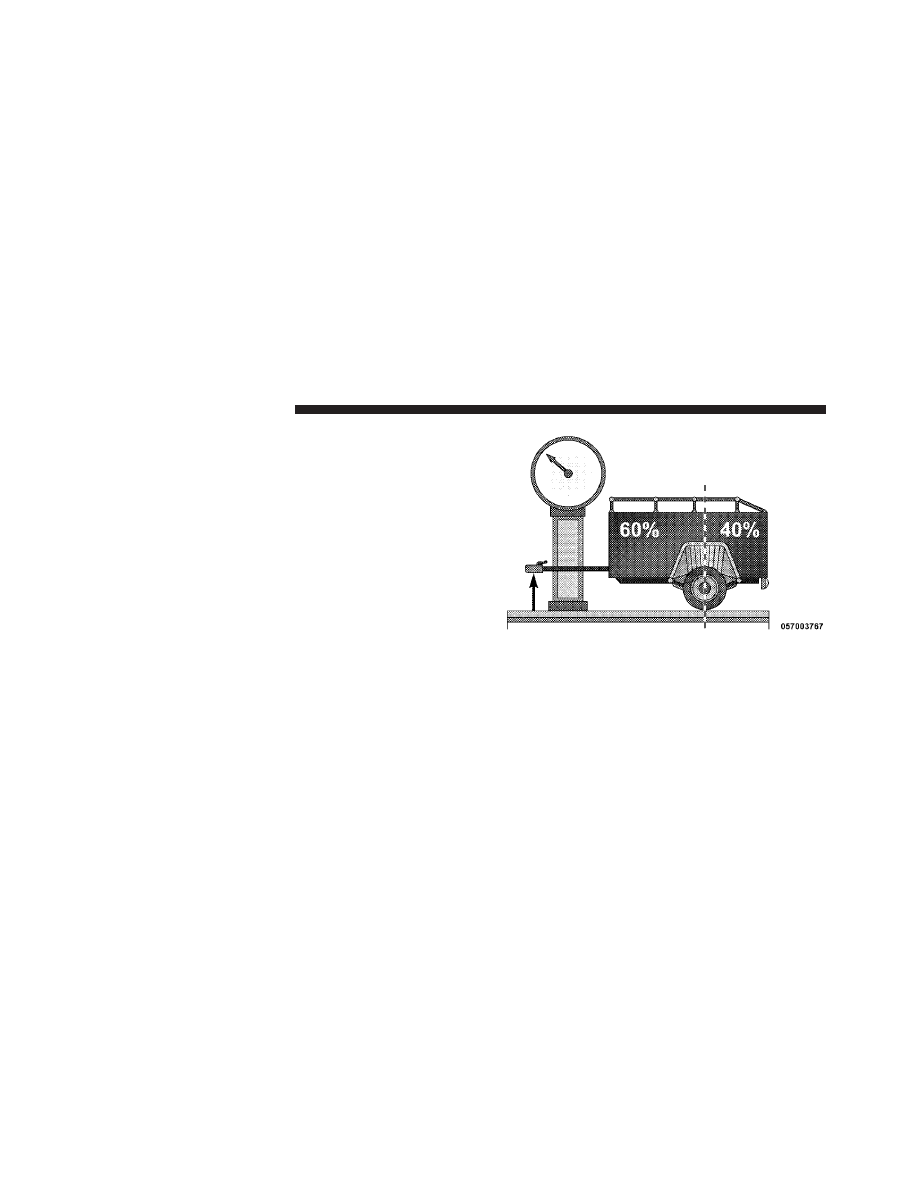Dodge Chassis Cab (2012 year). Instruction - part 22

Trailer Towing Weights
(Maximum Trailer Weight Ratings)
Refer to the following website address for your specific
vehicle’s
“BASE
WEIGHTS/GCW/PAYLOAD/
TRAILER TOW” information and restrictions based on
the type of trailer hitch:
• http://www.dodge.com/bodybuilder
Trailer And Tongue Weight
Always load a trailer with 60% to 65% of the weight in
the front of the trailer. This places 10% to 15% of the GTW
on the tow hitch of your vehicle. Loads balanced over the
wheels or heavier in the rear can cause the trailer to sway
severely
side to side which will cause loss of control of
the vehicle and trailer. Failure to load trailers heavier in
front is the cause of many trailer collisions.
Never exceed the maximum tongue weight stamped on
your trailer hitch.
Consider the following items when computing the
weight on the rear axle of the vehicle:
• The tongue weight of the trailer
• The weight of any other type of cargo or equipment
put in or on your vehicle
• The weight of the driver and all passengers.
348
STARTING AND OPERATING